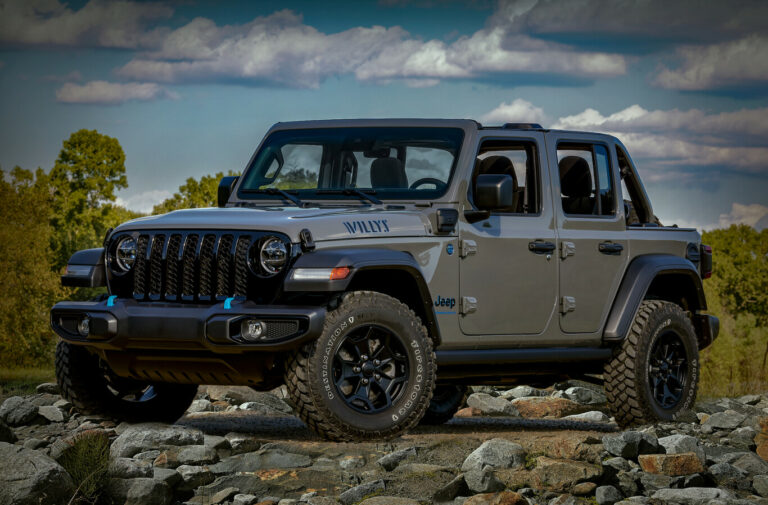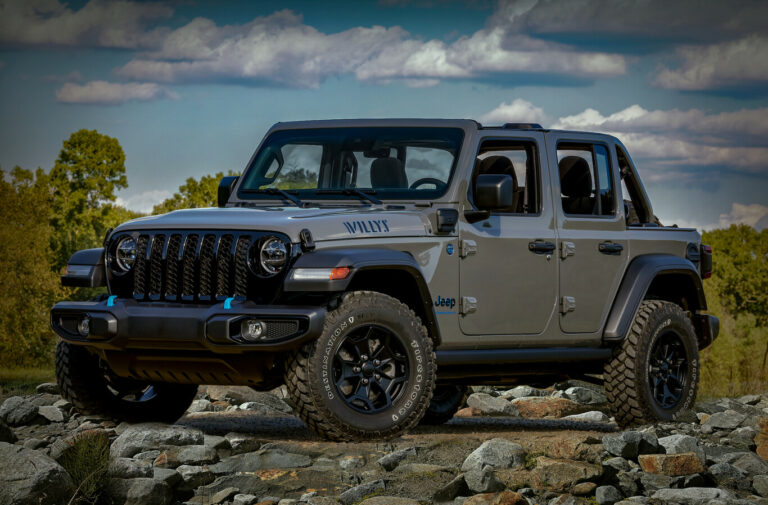1997 Jeep Wrangler Engines For Sale: Your Comprehensive Guide to Reviving an Icon
1997 Jeep Wrangler Engines For Sale: Your Comprehensive Guide to Reviving an Icon jeeps.truckstrend.com
The 1997 Jeep Wrangler, affectionately known as the TJ, holds a special place in the hearts of off-road enthusiasts and casual drivers alike. Marking a significant evolution from its YJ predecessor, the TJ brought coil spring suspension, a more refined ride, and the iconic round headlights back to the Wrangler lineup. Its rugged simplicity, legendary off-road capability, and timeless design have ensured its continued popularity for decades. However, even the most robust vehicles eventually face the inevitable: engine wear and tear.
For owners of a 1997 Jeep Wrangler whose engine is showing its age—be it through declining performance, persistent mechanical issues, or outright failure—the prospect of finding a reliable replacement engine becomes paramount. Whether you’re embarking on a full restoration, a performance upgrade, or simply need to get your beloved TJ back on the road, understanding the landscape of 1997 Jeep Wrangler engines for sale is crucial. This comprehensive guide will navigate you through the available options, key considerations, and practical advice to help you make an informed decision and breathe new life into your classic Jeep.
1997 Jeep Wrangler Engines For Sale: Your Comprehensive Guide to Reviving an Icon
Understanding the 1997 Jeep Wrangler (TJ) Engine Options
The 1997 Jeep Wrangler TJ offered two primary engine choices, both renowned for their durability and a wealth of aftermarket support:
-
2.5L AMC 150 Inline 4-Cylinder (I4):
- Power Output: Approximately 120 horsepower and 140 lb-ft of torque.
- Characteristics: This engine is known for its simplicity, fuel efficiency (relative to the 4.0L), and surprising capability for lighter off-roading. It’s a workhorse, often found in base models. While not a speed demon, its low-end torque is adequate for trail crawling, especially when paired with appropriate gearing.
- Ideal For: Daily driving, light trail use, those prioritizing fuel economy, or budget-conscious builds.

-
4.0L AMC 242 Inline 6-Cylinder (I6):

- Power Output: Approximately 181 horsepower and 222 lb-ft of torque.
- Characteristics: The legendary 4.0L I6 is arguably one of the most beloved and robust engines ever put into a Jeep. Known for its incredible longevity, prodigious low-end torque, and ease of maintenance, it’s the engine of choice for serious off-roaders and those seeking more highway passing power. Its cast-iron block and proven design make it incredibly resilient.
- Ideal For: Serious off-roading, towing, highway cruising, or anyone seeking the ultimate in reliability and performance from their TJ.

Both engines are non-interference designs, meaning that if the timing chain or belt (for the 4.0L, it’s a chain) breaks, the valves will not collide with the pistons, often preventing catastrophic damage. This design characteristic contributes to their reputation for durability.
Why Buy a Replacement Engine for Your 1997 TJ?
The decision to replace an engine often stems from various scenarios, each with its own rationale:
- Engine Failure: The most common reason. This could be due to a thrown rod, cracked block, severe head gasket failure, excessive oil consumption, or catastrophic internal damage from overheating or lack of maintenance.
- High Mileage Wear: After hundreds of thousands of miles, even a robust engine like the 4.0L will eventually lose compression, develop excessive blow-by, or suffer from worn bearings. A replacement can restore lost power and efficiency.
- Performance Upgrade: Many 2.5L owners dream of upgrading to the more powerful 4.0L. While this involves more than just swapping the engine (requiring a new transmission, ECU, wiring harness, and potentially axles), it’s a popular modification for those seeking more capability.
- Restoration Project: For enthusiasts restoring a TJ to its former glory, a fresh engine is often a cornerstone of the build, ensuring reliability for years to come.
- Cost-Effectiveness: In many cases, replacing a TJ’s engine is significantly more affordable than purchasing a newer vehicle, especially if the rest of the Jeep is in good condition (frame, body, transmission, axles). It allows you to keep a vehicle you know and love, avoiding the depreciation and unknown history of a new purchase.
Types of Replacement Engines Available
When searching for a 1997 Jeep Wrangler engine, you’ll generally encounter three main categories, each with its own pros, cons, and price point:
-
Used Engines (Salvage/Junkyard Pulls):
- Pros: Most affordable option. Readily available from auto recyclers and private sellers.
- Cons: Unknown history, mileage, and maintenance. Risk of hidden internal damage or impending failure. Often sold "as-is" with limited or no warranty.
- Where to Find: Local salvage yards, online marketplaces (eBay, Craigslist, Facebook Marketplace), specialized Jeep forums.
- Tips for Buying: Always try to get a video of the engine running, a compression test, and check for signs of oil leaks, sludge under the oil cap, or coolant contamination. Verify the VIN to ensure it’s from a compatible year and model.
-
Remanufactured/Rebuilt Engines:
- Pros: Offer a balance of cost and reliability. These engines have been disassembled, inspected, cleaned, and had all worn or damaged components replaced with new or reconditioned parts (e.g., pistons, rings, bearings, camshaft, cylinder head work). They often come with a warranty (1-3 years, unlimited mileage is common).
- Cons: More expensive than used engines.
- Where to Find: Specialized engine builders (e.g., Jasper Engines, ATK Engines), reputable auto parts suppliers, local engine rebuild shops.
- What to Look For: Understand the warranty terms and what’s included (e.g., long block vs. complete engine with accessories). Ensure the rebuilder has a good reputation.
-
New Crate Engines:
- Pros: Brand new, zero miles, full manufacturer warranty (if available), ultimate peace of mind.
- Cons: Most expensive option. For a 1997 TJ, a truly "new" production engine from Mopar is rare and likely extremely expensive, often limited to specialized performance applications rather than direct OEM replacements. Aftermarket new crate engines might be available but are also costly.
- Where to Find: Mopar Performance (for specific applications), high-end aftermarket performance suppliers.
- Note: For older vehicles like the 1997 TJ, "new" often refers to a fully remanufactured engine to OEM specifications, or an entirely new performance-oriented engine with significantly higher output (and price).
Key Considerations Before Purchasing
Before you commit to an engine, consider these vital factors:
- Engine Type (2.5L vs. 4.0L): If replacing like-for-like, it’s straightforward. If upgrading from a 2.5L to a 4.0L, be prepared for additional costs and complexity involving the transmission, transfer case, ECU (Engine Control Unit), wiring harness, and potentially driveshafts and axle gearing.
- Condition and Warranty: For used engines, a thorough inspection and a strong return policy are crucial. For remanufactured units, a solid warranty from a reputable builder is non-negotiable.
- Completeness of the Engine: Is it a "long block" (block, cylinder head, valvetrain) or a "complete engine" (includes intake manifold, exhaust manifold, sensors, throttle body, fuel injectors, etc.)? A complete engine simplifies installation but is more expensive. A long block requires transferring many components from your old engine.
- Shipping Costs: Engines are heavy. Factor in significant freight shipping costs, especially if buying from a distant seller.
- Installation: Will you install it yourself (requiring specialized tools, an engine hoist, and mechanical expertise) or hire a professional shop? Get quotes for installation labor.
- Emissions and Legalities: If performing an engine swap (e.g., 2.5L to 4.0L), check your local state’s emissions laws. Some states have strict regulations regarding engine swaps that may require specific components or certifications.
Where to Find 1997 Jeep Wrangler Engines For Sale
- Online Marketplaces: eBay Motors, Craigslist, Facebook Marketplace are common for used engines from private sellers or smaller salvage yards. Be cautious and verify seller reputation.
- Dedicated Jeep/Off-Road Forums: Communities like JeepForum.com or WranglerForum.com often have "For Sale" sections where enthusiasts buy and sell parts.
- National Auto Recycler Networks: Websites like Car-Part.com allow you to search inventories of thousands of salvage yards across the country, often with shipping options.
- Remanufacturing Companies: Companies like Jasper Engines & Transmissions, ATK Engines, or Fraser Engines specialize in high-quality remanufactured units with warranties.
- Local Auto Parts Stores/Machine Shops: Many local NAPA, AutoZone, or O’Reilly stores can order remanufactured engines. Local machine shops may offer their own rebuilt engines.
Tips for a Successful Engine Swap
- Research Thoroughly: Understand the specifics of your TJ’s engine and the replacement options. Consult service manuals and online guides.
- Budget Realistically: Account for the engine cost, shipping, core charge (if applicable for remanufactured), gaskets, fluids, sensors, hoses, belts, and potential unforeseen issues.
- Gather Necessary Tools: An engine hoist, engine stand, comprehensive socket/wrench set, torque wrench, and various specialty tools will be essential.
- Label and Organize: When removing components from your old engine, label everything, take pictures, and store parts in an organized manner.
- Replace Wear Items: Even if your replacement engine is complete, it’s wise to replace common wear items like the water pump, thermostat, spark plugs, wires, distributor cap/rotor (for 4.0L), and all fluids before installation.
- Break-In Procedure: If installing a new or remanufactured engine, follow the manufacturer’s recommended break-in procedure precisely to ensure longevity.
Potential Challenges and Solutions
- Finding a Quality Used Engine: It’s a gamble. Solution: Be patient, ask for detailed information, photos, and videos. Consider a professional pre-purchase inspection if possible. Prioritize engines with a limited warranty or return policy.
- Compatibility Issues: Sensors, wiring harnesses, and ECU programming can differ slightly even within the same engine family across different years. Solution: Verify part numbers and consult wiring diagrams. Be prepared to swap sensors or have the ECU flashed if necessary.
- Unexpected Costs: Old vehicles often reveal hidden problems during a major project. Solution: Add a 15-20% contingency to your budget for unforeseen expenses.
- Shipping Damage: Engines are heavy and can be mishandled during freight. Solution: Inspect the engine thoroughly upon delivery before signing off. Document any damage with photos and refuse delivery if severe.
Estimated Price Table for 1997 Jeep Wrangler Engines For Sale
Please note that these are estimated price ranges and can vary significantly based on location, seller, market demand, current economic conditions, included accessories, and core charges. Always verify prices and terms with the seller.
| Engine Type | Condition | Estimated Price Range (USD) | Key Features/Notes |
|---|---|---|---|
| 2.5L I4 | Used (High Mileage) | $600 – $1,200 | Pulled from salvage vehicles; mileage often unknown or high. "As-is" sales common. Best for budget builds or if you plan a full rebuild yourself. |
| 2.5L I4 | Used (Tested/Low-ish) | $1,000 – $1,800 | Often from wrecked vehicles with lower mileage or tested good. May come with a limited 30-90 day warranty. Still carries risk, but lower than high-mileage. |
| 2.5L I4 | Remanufactured | $2,000 – $3,500 | Thoroughly rebuilt to OEM specs; typically includes a 1-3 year warranty. Often sold as a long block (no accessories). Requires core return. Excellent balance of cost and reliability. |
| 4.0L I6 | Used (High Mileage) | $800 – $1,500 | Common find in salvage yards. Expect high mileage. Best for those with deep mechanical knowledge willing to gamble or perform a refresh. "As-is." |
| 4.0L I6 | Used (Tested/Low-ish) | $1,500 – $2,800 | More sought-after. From accident vehicles with verifiable lower mileage or compression-tested. May have 30-90 day warranty. Higher demand, so prices can fluctuate. |
| 4.0L I6 | Remanufactured | $2,800 – $4,500 | The most popular choice for reliable replacement. Comes with a substantial warranty (1-5 years, unlimited mileage common). Sold as long block or complete. Requires core return. Highest confidence in longevity. |
| 4.0L I6 | New Crate (Aftermarket Performance) | $5,000 – $8,000+ | Rare for direct OEM replacement, but specialized builders offer new or heavily upgraded versions for performance. Often comes with enhanced components and higher power output. Limited availability for stock replacement. |
(Prices are estimates only and subject to change.)
Frequently Asked Questions (FAQ)
Q: What are the main engine options for a 1997 TJ?
A: The two main factory options were the 2.5L Inline 4-cylinder (I4) and the 4.0L Inline 6-cylinder (I6).
Q: Can I swap a 2.5L for a 4.0L in my 1997 TJ? What’s involved?
A: Yes, it’s a common and popular swap. However, it’s not just an engine swap. You’ll typically need to replace the transmission (the 2.5L and 4.0L use different bell housings), the ECU, the wiring harness, and potentially the transfer case, driveshafts, and radiator. It’s a significant undertaking.
Q: What’s the difference between a used and a remanufactured engine?
A: A used engine is pulled from another vehicle, sold as-is, with unknown internal condition. A remanufactured engine has been completely disassembled, inspected, cleaned, and had all worn parts replaced with new or reconditioned components, essentially restoring it to like-new condition, often with a warranty.
Q: How much does a 1997 TJ engine cost?
A: Prices vary widely. A used engine can range from $600 to $2,800 depending on condition and mileage. A remanufactured engine typically costs between $2,000 and $4,500. Refer to the price table above for more details.
Q: What should I look for when buying a used engine?
A: Ask for a video of it running, a compression test report, and check for signs of oil leaks, sludge, or coolant contamination. Verify the vehicle it came from (VIN, mileage) if possible. Always prefer a seller who offers a limited warranty or return policy.
Q: Do these engines come with a warranty?
A: Used engines typically have very limited or no warranty (e.g., 30-90 days, "parts only"). Remanufactured engines usually come with a substantial warranty, often 1-3 years with unlimited mileage.
Q: Is it hard to install an engine myself?
A: Engine installation is an advanced mechanical task requiring specialized tools (like an engine hoist), significant mechanical knowledge, and patience. If you’re not experienced, it’s highly recommended to have a professional mechanic perform the swap.
Q: What other parts will I need for an engine swap?
A: Beyond the engine itself, you’ll likely need new gaskets (head gasket, manifold gaskets, valve cover gasket, oil pan gasket), all new fluids (oil, coolant), spark plugs, wires, filters, new belts, hoses, and possibly a new water pump, thermostat, and various sensors.
Conclusion
The 1997 Jeep Wrangler TJ is more than just a vehicle; it’s a legacy. When its heart, the engine, begins to falter, the journey to find a suitable replacement can seem daunting. However, by understanding the available options—from budget-friendly used pulls to reliable remanufactured units—and by carefully considering your needs and budget, you can make an informed decision.
Whether you’re looking to simply get back on the road, upgrade your off-road prowess, or complete a meticulous restoration, securing the right engine is the most critical step. With careful research, a clear understanding of the risks and benefits, and a well-planned approach, you can ensure your 1997 Jeep Wrangler continues to conquer trails and turn heads for many more years to come. The spirit of adventure that defines the TJ is worth preserving, and a new engine is often the key to keeping that spirit alive.


